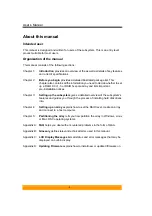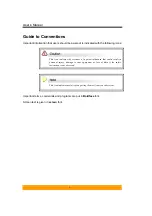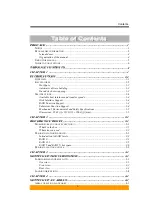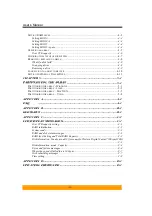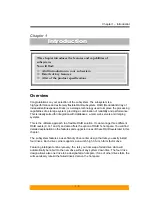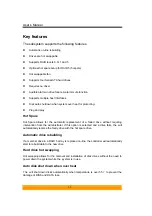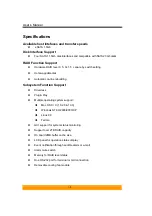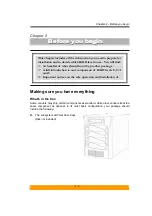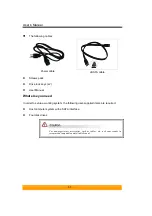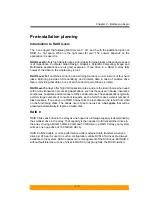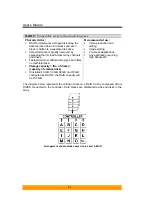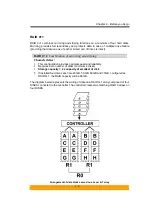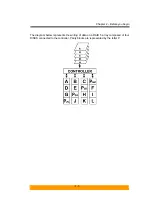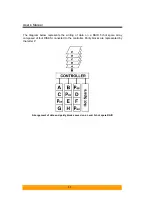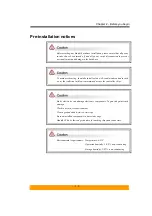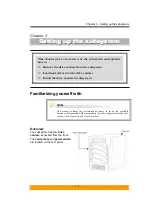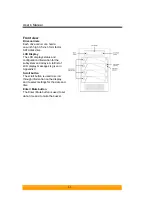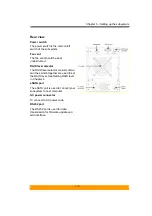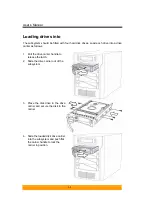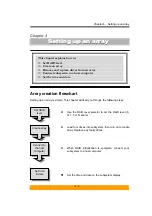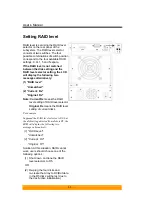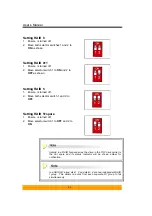
Chapter 2 – Before you begin
- 2-3 -
Pre-installation planning
Introduction to RAID levels
The can support the following RAID levels: 0, 0+1 and 5 with the additional option of
RAID 5 + hot spare. Which is the right level for you? The answer depends on the
application it is used for.
RAID Level 0
offers high transfer rates, and is ideal for large blocks of data where speed
is of importance. Computer Aided Design, Graphics, Scientific Computing, Image and
Multimedia applications are all good examples. If one drive in a RAID 0 array fails
however, the data on the whole array is lost.
RAID Level 0+1
combines mirroring and striping functions on a minimum of four hard
disks. Mirroring provides full redundancy and protects data in case of multiple drive
failure (providing that data on one of each mirrored pair of drives is intact).
RAID Level 5
arrays offer high I/O transaction rates, and are the ideal choice when used
with on-line transaction processing applications, such as those used in banks, insurance
companies, hospitals, and all manner of office environments. These applications typically
perform large numbers of concurrent requests, each of which makes a small number of
disk accesses. If one drive in a RAID 5 array fails, the lost data can be rebuilt from data
on the functioning disks. The allows users to set one disk as a
hot spare
that will be
activated automatically to replace a failed disk.
RAID 0
RAID 0 links each drive in the array as one huge drive. Storage capacity is determined by
the smallest drive in the array. That capacity is then applied to format all other drives in
the array. If using a 40 GB, 50GB, 60 GB, and 70 GB drive in a RAID 0 array, your system
will see one huge drive of 160 GB (40 GB×4).
RAID 0 offers double or more performance under sustained data transfers when one
drive per ATA port is used. In such a configuration, unlike SCSI, ATA drives are always
available to the system. SCSI requires more management of the SCSI bus. But RAID 0
without fault tolerance, if one of disks in RAID 0 array group fails, the RAID crashed.
Summary of Contents for S4-ESTT
Page 1: ...easyRAID S4 ESTT eSATA 1 5Gb to Serial ATA Disk Array System User Manual Version 1 0 ...
Page 2: ......
Page 3: ...S4 ESTT eSATA 1 5Gb to serial ATA Disk Array System User Manual ...
Page 4: ......
Page 9: ...Preface 3 UL Listed This equipment meets UL s safety requirements ...
Page 20: ......
Page 30: ......
Page 46: ......
Page 53: ...Chapter 5 Partitioning the array 5 7 ...
Page 56: ......


